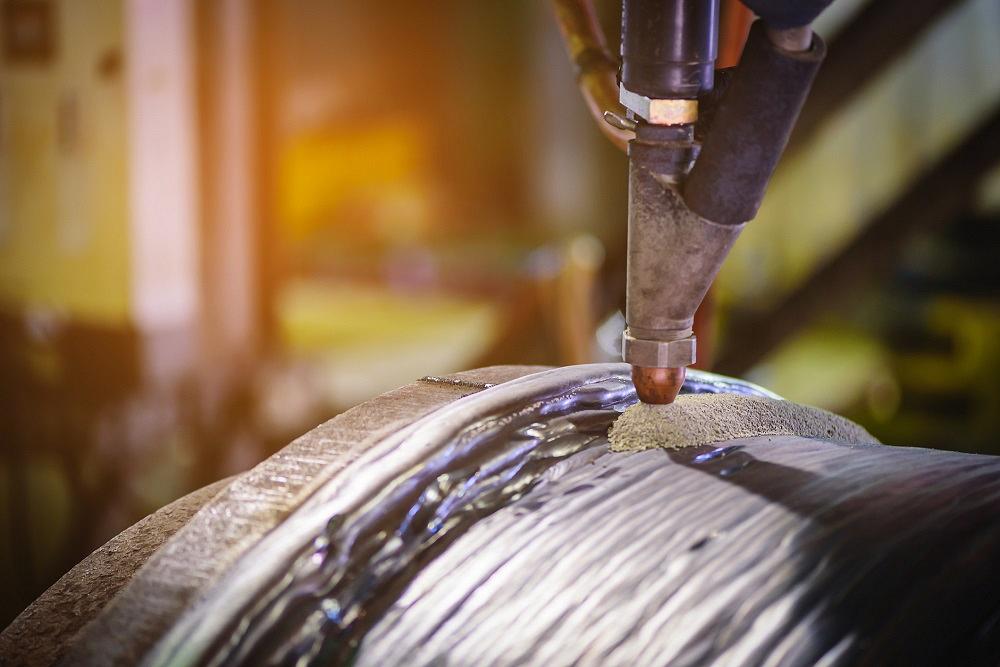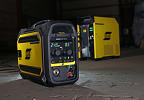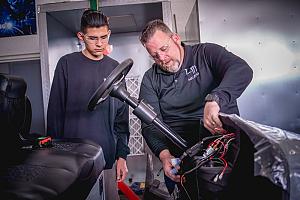Technical Liaison Manager
- FMA
- The Fabricator
- FABTECH
- Canadian Metalworking
Categories
- Additive Manufacturing
- Aluminum Welding
- Arc Welding
- Assembly and Joining
- Automation and Robotics
- Bending and Forming
- Consumables
- Cutting and Weld Prep
- Electric Vehicles
- En Español
- Finishing
- Hydroforming
- Laser Cutting
- Laser Welding
- Machining
- Manufacturing Software
- Materials Handling
- Metals/Materials
- Oxyfuel Cutting
- Plasma Cutting
- Power Tools
- Punching and Other Holemaking
- Roll Forming
- Safety
- Sawing
- Shearing
- Shop Management
- Testing and Measuring
- Tube and Pipe Fabrication
- Tube and Pipe Production
- Waterjet Cutting
Industry Directory
Webcasts
Podcasts
FAB 40
Advertise
Subscribe
Account Login
Search
The role of flux in submerged arc welding performance
Consumables Corner columnists look at how basicity index value affects SAW
- By David Meyer
- April 29, 2024

Basicity index value can be the difference between a successful or unsuccessful weld in submerged arc welding. Kapook2981/iStock/Getty Images Plus
Q: We manufacture thin-walled pressure vessels and water tanks. We recently switched from an active flux with a basicity index value of 0.5 to a less active flux with basicity of 0.9. When we switched flux, we made no changes to any settings or joint design. With the same welding parameters, we started to have issues with blowing through. Would the flux be responsible for this and if so, why does this happen?
Yes, the change in flux is probably the cause of the change in welding results. The numerous types of flux used in submerged arc welding have a large influence on welding performance and finished weld mechanical properties.
Last time, we discussed the different types of flux and their respective categories, so let’s review a few key points. Fluxes are categorized by how they are manufactured, their basicity index value, and activity. There are three types of manufacturing methods—bonded, agglomerated, and mechanically mixed—with agglomerated being the most common. All fluxes have an associated basicity index value that falls between 0.5 and 4.0, with the values below 1.0 being acidic and those above 1.0 being neutral to basic in nature. Meanwhile, activity is a measure of how the weld deposit composition might change with a change in welding voltage.
Low-basicity or acidic flux is generally used in high-speed, single-pass applications or where there are higher levels of surface contamination like rust and mill scale. Low-basicity fluxes are frequently active fluxes containing significant amounts of metallic silicon and manganese. The silicon and manganese react with surface contaminants. These fluxes provide good wetting action and resistance to porosity but do not produce welds with good toughness for cold weather applications.
Neutral or highly basic fluxes are used in single- or multiple-electrode, single- or multipass weld applications that require good cold weather toughness, typically below -40 degrees F. These fluxes may also be active, but they most often are neutral (low activity) and produce only small changes in weld-deposited silicon and manganese with a voltage change.
The welding performance differences between the opposite ends of the basicity index are most notable with respect to travel speed. Neutral or basic fluxes typically do not provide good bead profiles or slag detachability when travel speed is above 50 in. per minute. From a weld integrity standpoint, neutral or basic fluxes result in metallurgically cleaner weld metal compared to acidic fluxes, thereby leading to weld metal that has improved cold weather toughness.
Each raw material that comprises flux plays a specific role, provides unique attributes, and interacts with other components. Some are responsible for maintaining arc stability, some produce gases that shield the molten weld pool from the atmosphere, and others may provide cleaning action. It is understood that as the basicity index value increases, weld penetration also increases while conversely reducing weld bead width. Keep in mind that welding parameters largely dictate welding performance; for example, amperage is largely responsible for depth of penetration while voltage controls bead width.
You stated the only variable that changed was the type of flux and the associated basicity index value. One could conclude that this was most likely the reason for the excessive penetration. When changing from one flux to another, you should expect that parameter adjustments will be required to achieve a similar welding performance.
subscribe now

The Welder, formerly known as Practical Welding Today, is a showcase of the real people who make the products we use and work with every day. This magazine has served the welding community in North America well for more than 20 years.
start your free subscriptionAbout the Author

About the Publication
Related Companies
- Stay connected from anywhere

Easily access valuable industry resources now with full access to the digital edition of The Fabricator.

Easily access valuable industry resources now with full access to the digital edition of The Welder.

Easily access valuable industry resources now with full access to the digital edition of The Tube and Pipe Journal.
- Podcasting
- Podcast:
- The Fabricator Podcast
- Published:
- 05/14/2024
- Running Time:
- 62:12
Cameron Adams of Laser Precision, a contract metal fabricator in the Chicago area, joins the podcast to talk...
- Trending Articles
Connecticut students compete in Maritime Welding Competition

Welding power source’s modes designed to help optimize performance

Building a successful welding program from the ground up

Torch made for welding thin, conductive sheet metal

Welding jacket designed for protection, comfort

- Industry Events
Laser Welding Certificate Course
- May 7 - August 6, 2024
- Farmington Hills, IL
World-Class Roll Forming Workshop
- June 5 - 6, 2024
- Louisville, KY
Advanced Laser Application Workshop
- June 25 - 27, 2024
- Novi, MI
Precision Press Brake Certificate Course
- July 31 - August 1, 2024
- Elgin,


























